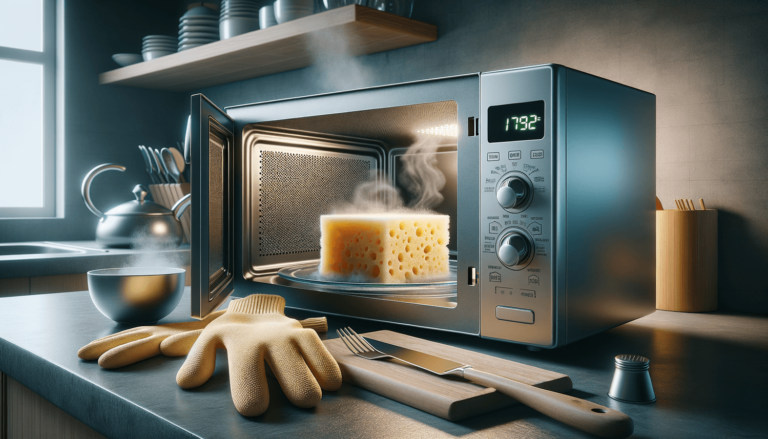

Written by: Settings King
Last updated:

Yes, you can microwave a sponge for cleaning. This method is effective for killing bacteria and germs on your sponge, making it a simple and quick way to disinfect. However, it is crucial to thoroughly moisten the sponge before microwaving it to avoid any risk of fire. Microwaving a damp sponge for 1-2 minutes on high power is generally considered safe and efficient. Always monitor the process and let the sponge cool down before handling it again to prevent burns.
Quick Summary
At Setting King, we’re committed to providing our trusted advice for everyday questions. When it comes to cleaning and disinfecting your kitchen sponge, many might wonder if the convenience of a microwave can be employed. The truth is, yes, you can use your microwave to disinfect your sponge, but it is essential to do it correctly to ensure safety and effectiveness.
Microwaving a sponge is effective because the heat generated by the microwave kills most of the bacteria and germs found on the sponge. This method is beneficial for maintaining a cleaner and more hygienic kitchen environment. It’s a quick solution compared to other methods, such as soaking the sponge in bleach or a disinfectant solution.
Thoroughly wet your sponge before placing it in the microwave. The moisture is crucial as it turns into steam under the microwave’s high temperatures, which then disinfects the sponge. Without sufficient moisture, there is a risk of the sponge catching fire or getting damaged.
Place the wet sponge in the microwave and heat it on high power for about 1-2 minutes. The exact time may vary depending on your microwave. It is essential to monitor the sponge during this process to immediately address any issues that might arise, such as smoke or a burning smell.
After microwaving, carefully remove the sponge from the microwave using tongs or wait a few minutes to let it cool down inside. The sponge will be hot, and handling it too soon can result in burns.
While microwaving your sponge is a useful technique, there are a few cautions to keep in mind:
In conclusion, microwaving your sponge can be a quick and effective way to reduce the number of germs and prolong its use. However, it’s important to follow safety precautions to avoid any accidents. At Setting King, we believe that knowing these small tips can make a big difference in maintaining a clean and safe kitchen environment. Stay tuned for more trusted advice!